Unit 4: Systems Exam
1/19
Name | Mastery | Learn | Test | Matching | Spaced |
|---|
No study sessions yet.
20 Terms
What is amylase?
It’s an enzyme (found in saliva) that breaks down starch into disaccharides - only activated when eating carbohydrates
What causes gastric juice to be released?
The nerves in the submucosa release a hormone called gastrin into the bloodstream where it then causes the cells of the mucosa to release gastric juice (submucosa → gastrin -→ bloodstream → mucosa → gastric juice)
What does the stomach do?
- partially digests proteins
- does not digest lipids and carbohydrates
- nerves initiate the release of the hormone, gastrin, into the blood stream so that it signals the release of gastric juice
What are sphincters?
‘Valves’ with muscles instead of flaps - gastrpesophageal, pyloric, anus
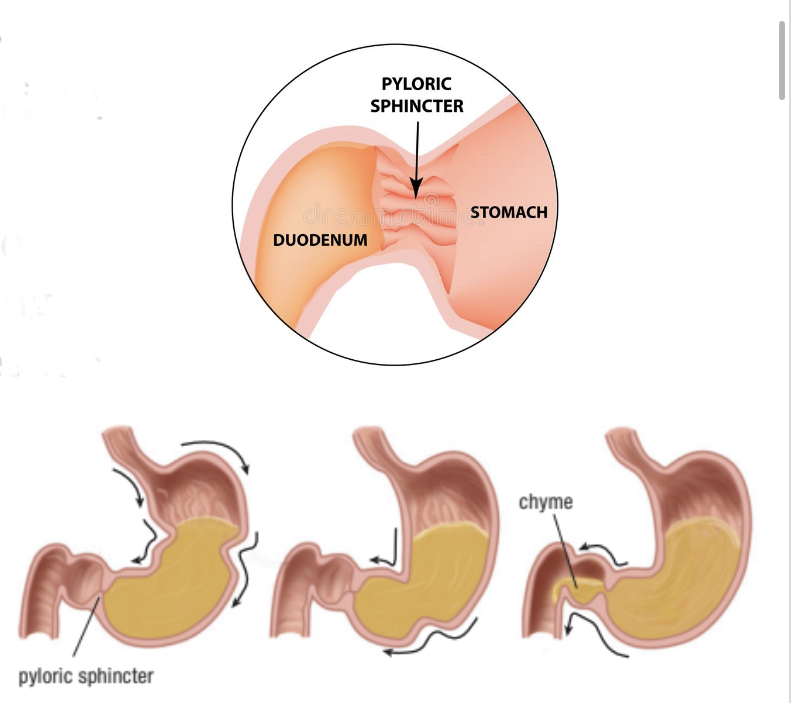
What does the small intestine do?
Chemical digestion of carbohydrates, lipids, and proteins and signals w/ cholecystokinin (CKK) for gallbladder to release bile;
- duodenum (secretes hormones for accessory organs to secrete juices; gallbladder - bile, pancreas - trypsin, amylase, lipase)
- jejunum (digestion finishes → absorption)
- ileum (absorbs most nutrients)
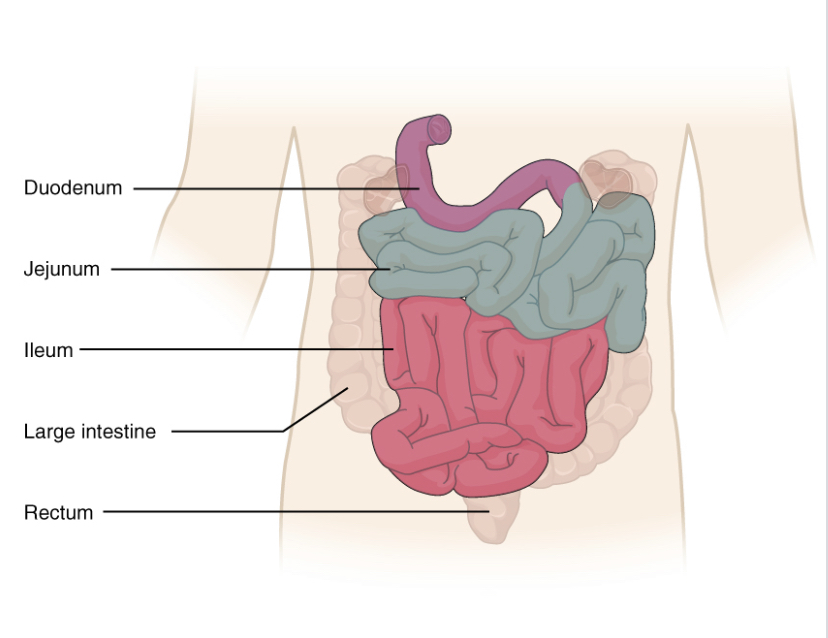
What does the pancreas do?
Secretes digestive enzymes when signalled by cholecystokinin (CCK) through special pancreatic duct
- trypsin: proteins - active form of trypsinogen
- amylase: carbohydrates - especially starch/disaccharides
- lipases: lipids/fats
- secretin: triggered by chyme and stimulates secretion and creation of enzymes and bile
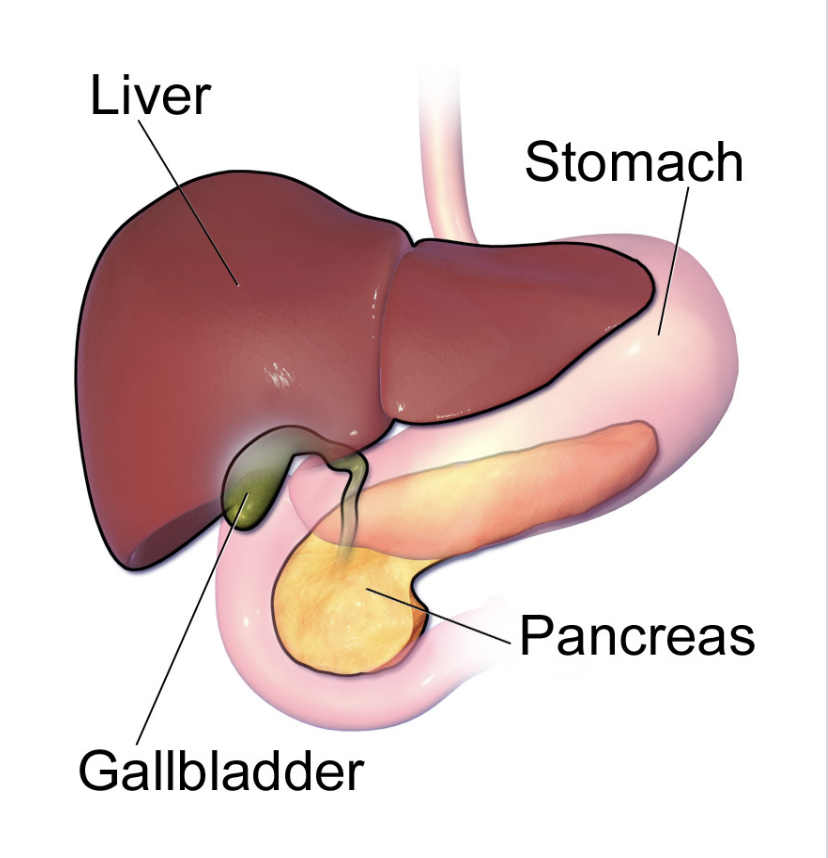
What does a liver do?
Secrets bile which emulsifies lipids and breaks them into micelles
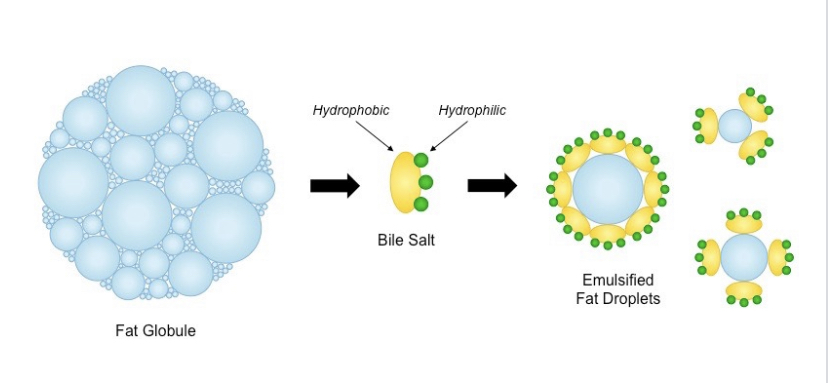
What does the gallbladder do?
Stores bile and secretes to duodenum through special bile duct
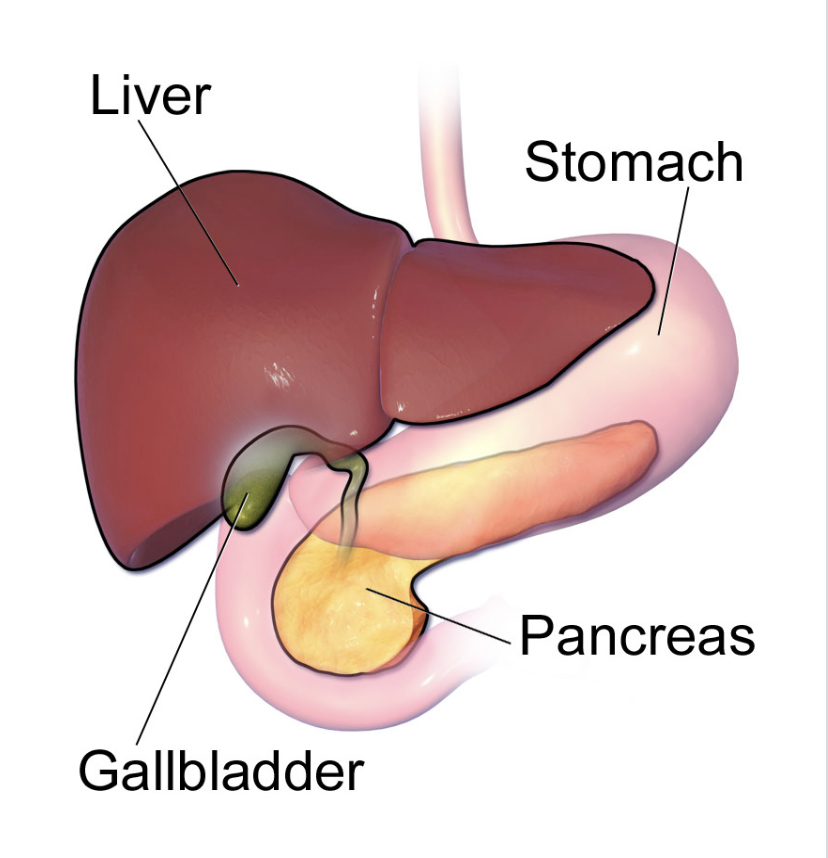
What does the large intestine do?
Absorbs water and stores food waste
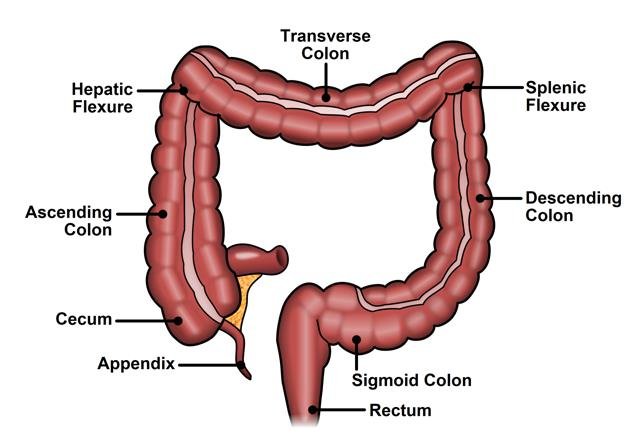
What is respiration?
It’s the movement of gases between the outside environment and cells within tissues, there are three types: external, internal, and cellular
- External: gas exchange between air and blood; alveoli
- Internal: gas exchange between tissues and blood
- Cellular: creates ATP/energy in Mitochondria; consumes O2 and releases CO2
Statistics regarding cellular respiration
- 64% energy created is released as thermal energy (maintain body heat)
- 34% stores in molecules called adenosine triphosphate (ATP)
What do internal intercostal muscles do?
Expiration: Internal intercostal muscles lower the chest downwards which limits volume but increases pressure
What do external intercostal muscles do?
Inspiration: External intercostal muscles raise the chest upwards which creates more volume and lower pressure
What do internal intercostal muscles do?
Expiration: Internal intercostal muscles lower the chest downwards which limits volume but increases pressure
What is a residual/reserve volume (RV)?
It’s the leftover air in the respiratory system after maximum exhalation
What is expiratory reserve volume (ERV)?
It’s the maximum amount of air of forced exhalation in normal breaths
What is inspiratory reserve volume (IRV)?
It’s the maximum amount of air of forced inhalation in normal breaths (when breathing normally, how much as possible can be let out)
What is vital capacity (CV)?
It’s the maximum amount of air that can be exhaled after a maximum inhalation
What is tidal volume (TV)?
It’s the volume of air in a normal involuntary breath
What are the three main functions of the circulatory system?
- A fluid that transports (circulates) materials through the body
- A network of tubes in which the fluid circulates
- A pump that pushes the fluid through the tubes